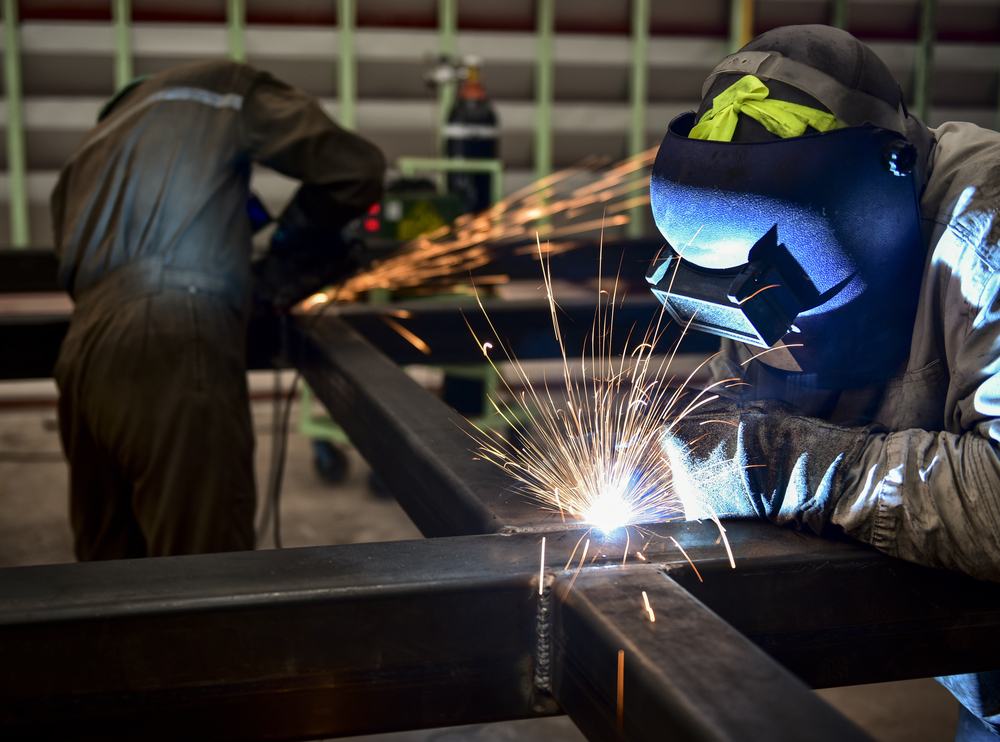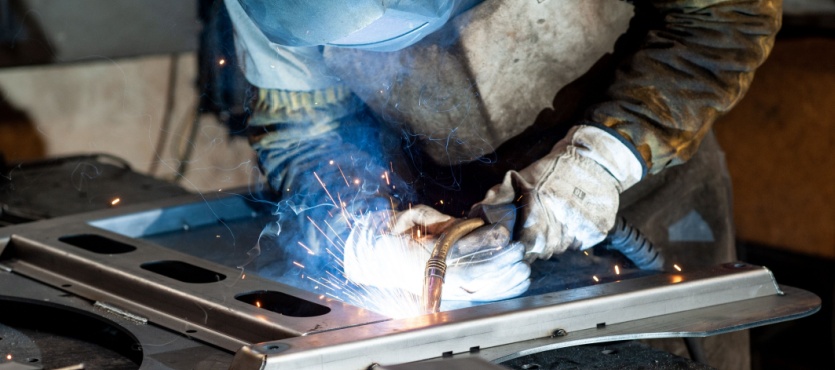Typical Welding Repair Service Issues and Exactly How to Address Them Properly
Welding repair services usually encounter a variety of problems that can threaten the integrity of the end product. Common problems consist of insufficient infiltration, porosity, and misalignment, to name a few. Each flaw offers special obstacles that call for specific strategies for resolution. Understanding these concerns is important for welders intending to boost their skills and results. This discussion will explore these usual welding fixing problems and effective approaches to resolve them.
Insufficient Infiltration
Poor penetration happens when the weld metal stops working to completely fuse with the base product, leading to weak joints and prospective structural failures. This problem frequently stems from inadequate warmth input, inaccurate electrode angle, or improper welding rate. Welders might run into poor infiltration due to a mistake of the needed parameters for a details product thickness or type. In addition, contamination on the base product's surface can hinder efficient bonding, exacerbating the trouble. To attend to inadequate penetration, welders need to guarantee proper setups on their equipment and maintain a tidy job surface. Regular evaluation of welds is recommended to identify any kind of shortages early, permitting prompt adjustments and the avoidance of compromised structural stability in welded settings up.
Porosity
Porosity is a common problem in welded joints that materializes as little gas bubbles caught within the weld steel. This issue can endanger the stability of the weld, causing reduced stamina and potential failing under stress and anxiety. Montana Mobile Welding and Repair Belgrade Welding. Porosity typically emerges from contamination, dampness, or inappropriate welding techniques, which permit gases to leave into the molten weld swimming pool. To address porosity, welders should ensure appropriate surface area prep work, maintain a clean working environment, and make use of ideal welding parameters. Additionally, choosing the right filler material and shielding gas can minimize gas entrapment. Normal assessment and screening of welds can assist recognize porosity early, ensuring timely restorative actions are taken, thus preserving the top quality and integrity of the welded structure
Misalignment
Imbalance in welding can develop from numerous elements, consisting of incorrect configuration and thermal expansion. Comprehending the source is necessary for efficient resolution. Several adjustment methods are readily available to straighten components and assure architectural stability.
Root causes of Imbalance
Welding misalignment frequently originates from a range of underlying problems that can jeopardize structural honesty. One key cause is inappropriate fit-up of elements prior to welding, which can bring about voids and uneven surfaces. Variations in thermal development during the welding procedure can likewise lead to distortion, specifically if the materials being joined have different coefficients of development. Furthermore, insufficient clamping and fixturing may fall short to hold parts safely in area, leading to activity throughout welding. Poorly maintained equipment, consisting of welding machines and tools, might present inconsistencies in the weld bead, further contributing to misalignment. Lastly, driver mistake, stemming from inadequate training or experience, can likewise play a substantial role in producing misaligned welds.
Improvement Strategies Readily Available
Dealing with misalignment successfully needs a mix of rehabilitative methods customized to the specific problems handy. One common approach is the usage of jigs or components to hold components in the proper setting during welding, ensuring constant placement. Additionally, preheating the materials can help in reducing distortion and enhance fit-up. For substantial imbalance, mechanical adjustment methods, such as using hydraulic jacks or clamps, can be employed to fix the setting prior to welding. Post-weld heat therapy might additionally be essential to relieve stress and anxieties brought on by misalignment. Careful examination and adjustment during the setup stage can stop imbalance problems from becoming considerable issues, promoting a smoother welding process and boosting overall structural integrity.
Distortion
Distortion is a common difficulty in welding that can arise from numerous aspects, including uneven cooling and heating. Comprehending the reasons for distortion is vital for implementing reliable prevention techniques. Addressing this problem not just enhances structural integrity yet also boosts the overall quality of the weld.
Causes of Distortion
When based on the intense heat of welding, products typically undertake modifications that can result in distortion. This sensation mostly arises from thermal growth and tightening throughout the welding process. As the weld location warms up, the material increases; upon cooling, it gets, which can produce inner stress and anxieties. Furthermore, uneven heating across a work surface can intensify these stress and anxieties, resulting in warping or bending. The kind of product additionally plays a considerable role; steels with varying thermal conductivity and coefficients of growth may react in a different way, leading to unpredictable distortions. Bad joint design and insufficient fixturing can add to imbalance throughout welding, raising the likelihood of distortion. Recognizing these reasons is important for efficient welding repair work and prevention approaches.
Prevention Techniques
Reliable prevention techniques for distortion during welding emphasis on regulating warmth input and making sure appropriate joint layout. Maintaining a constant warm input assists to minimize thermal expansion and contraction, which can bring about distortion. Using techniques such as preheating the workpiece can likewise lower the temperature level slope, advertising uniform heating. Furthermore, choosing appropriate joint layouts, such as T-joints or lap joints, can enhance stability and lower anxiety concentrations. Executing correct fixturing to safeguard the work Going Here surfaces in position better help in preserving alignment during the welding procedure. Staggered welding sequences can distribute warm extra evenly, stopping local distortion. By using these techniques, welders can considerably lower the probability of distortion and boost the total high quality of their welds.
Cracking
Splitting is an usual concern encountered in welding fixings, commonly resulting from various variables such as improper air conditioning rates, material option, or insufficient joint prep work. The occurrence of cracks can considerably jeopardize the integrity of the weld, leading to prospective failings throughout operation. To address this issue, welders must initially evaluate the root creates, guaranteeing that materials work and suitably chosen for the certain application. Furthermore, controlling the air conditioning price throughout the welding process is crucial; quick air conditioning can induce stress and bring about splitting. Proper joint layout and preparation likewise contribute to minimizing the risk. Applying these approaches can improve weld top quality and toughness, inevitably reducing the probability of breaking in completed weldments.

Insufficient Fusion
A significant concern in welding repair services is incomplete fusion, which takes place when the weld metal does not adequately bond with the base material or previous weld passes - Belgrade Welding. This flaw can cause weak points in the joint, possibly jeopardizing the integrity of the bonded framework. Aspects contributing to incomplete blend include inadequate heat input, improper welding method, and contamination of the surface areas being joined. To address this problem successfully, welders must assure correct pre-weld cleaning and surface prep work, along with change their welding criteria to accomplish adequate infiltration and combination. Normal inspection throughout the welding process can additionally aid recognize incomplete combination early, permitting for prompt corrective steps to improve the overall high quality of the weld
Overheating
While welding repair services can improve structural integrity, overheating provides a substantial difficulty that can lead to material destruction. Too much warmth during welding can modify the mechanical properties of steels, causing minimized toughness, raised brittleness, and bending. This phenomenon is especially crucial in high-stress applications where structural reliability is see here now extremely important. Identifying overheating can involve aesthetic examinations for discoloration or distortion, along with monitoring temperature throughout the welding process. To reduce the risks associated with getting too hot, welders need to use appropriate strategies, such as managing warmth input, readjusting traveling speed, and utilizing suitable filler materials. Additionally, implementing pre- and post-weld heat treatments can assist recover material properties and enhance the general quality of the repair, making sure long-lasting performance and safety.
Regularly Asked Questions
What Are the Common Indications of a Welding Flaw?

How Can I Examine My Welds for Quality?
To test welds for high quality, one can make use of visual examinations, ultrasonic screening, and radiographic methods. Each method guarantees structural honesty, identifies issues, and confirms adherence to specified requirements, inevitably improving the integrity of the bonded joints.
What Security Safety Measures Should I Take While Welding?
When welding, one need to focus on safety by putting on proper personal safety equipment, making certain correct air flow, protecting flammable materials away, preserving a tidy work space, and knowing surroundings to stop injuries and accidents.
Can I Repair a Weld Without Renovating the Entire Joint?
Fixing a weld without renovating the whole joint is feasible, relying on the damages (Montana Mobile Welding and Repair Fabrication). Methods such as grinding, including filler product, or utilizing a welding process can efficiently resolve details flaws while protecting the surrounding framework
What Tools Are Vital for Effective Welding Repairs?
Vital devices for efficient welding repairs include a welding equipment, cord brush, mill, protective gear, clamps, and filler materials. Each device plays a crucial duty in making certain high quality and safety throughout the fixing process. Porosity generally occurs from contamination, moisture, or incorrect welding strategies, which allow gases to run away right into the liquified weld pool. Poorly conserved tools, consisting of welding makers and tools, may present variances in craftsman wire feed welder the weld grain, more contributing to misalignment. When subjected to the extreme warmth of welding, products usually go through adjustments that can lead to distortion. Fracturing is an usual problem experienced in welding fixings, frequently resulting from different elements such as inappropriate cooling rates, material choice, or inadequate joint prep work. A significant problem in welding fixings is incomplete combination, which takes place when the weld steel does not properly bond with the base material or previous weld passes.